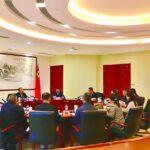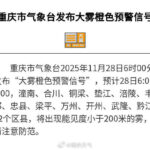In Dongguan, Guangdong, Haixin Company has built its own wastewater treatment facility and commissioned a professionally qualified agency to ensure compliant and达标 discharge. Dongguan Rural Commercial Bank has innovatively launched a « scattered industrial wastewater indicator data-linked loan » based on the company’s real-time data on industrial wastewater generation and treatment. This loan directly ties financing costs and credit limits to core environmental indicators such as wastewater treatment volume and达标 discharge stability.
This is a microcosm of how Guangdong’s financial sector is using innovative financial tools to help companies monetize their green investments and actively support their green and low-carbon transformation.
Over the past year, Guangdong has pioneered the issuance of the nation’s first transition bonds for the glass industry and gradually expanded transition finance loans to cover building materials sectors such as cement, glass, and ceramics, before extending to high-carbon industries like steel, aluminum, chemicals, and water transport.
Against the backdrop of ongoing « dual carbon » goals, these traditionally overlooked industries are gaining increasing attention from financial institutions. The attitude toward transition finance is shifting from « whether to do it » to « how to do it. »
As a major manufacturing province, Guangdong faces an especially urgent task in transforming and upgrading traditional industries.
Currently, Guangdong is leveraging the effective integration of green finance and transition finance, following a « standards first, pilot breakthroughs, multi-party collaboration » approach to explore a « Guangdong path » for financial support in the green and low-carbon transition of high-carbon industries, injecting momentum into the modernization of its industrial system.
The latest data from the Guangdong branch of the People’s Bank of China shows that financial institutions in the province have issued 39 transition finance-compliant loans totaling 3.36 billion yuan.
« With the rollout of transition standards for various industries, we will further increase support for equipment upgrades and technological improvements, » said a representative from the Corporate Finance Department of ICBC Huizhou Branch.
This year, transition finance has become a key direction for banks in advancing green finance. Many industry insiders note that banks’ focus has shifted from « whether to do it » to « how to do it. » However, compared to pure green projects like renewable energy, transition finance faces numerous challenges in implementation.
In the past, high-carbon industries such as steel and cement, classified as « high-energy-consuming and overcapacity » sectors, struggled to secure financing for low-carbon transitions under traditional credit policies. Thus, establishing clear standards for eligible projects is a prerequisite for financial institutions to engage in transition finance.
It is understood that relevant authorities are currently leading the development of transition finance standards for seven industries, including shipping and chemicals. Before a unified national standard is introduced, regions like Guangdong have already formulated and implemented local transition finance standards based on their industrial characteristics.
A representative from the Guangdong branch of the People’s Bank of China explained that in recent years, Guangdong has focused on integrating green and transition finance, following a « standards first, pilot breakthroughs, multi-party collaboration » approach to explore financial support for high-carbon industries’ green and low-carbon transition.
In reality, developing industry-specific transition finance standards is no easy task.
A representative from the Guangdong Green Finance Committee noted that local transition finance standards typically take months or even over a year from design to implementation. For example, the Guangdong ceramic transition finance standard, initiated in August 2023, underwent a year of research,测算, consultation, and refinement before its official release in September 2024.
Even with standards in place, transition finance projects are more complex to execute than traditional green projects.
For equipment upgrade projects, financial institutions require project approval documents, feasibility reports, environmental impact assessments, and低碳转型 interview records to compare pre- and post-upgrade carbon emissions and energy consumption. Financing is only provided after confirming environmental benefits.
Sustainability-linked projects involve even more complex processes. For instance, Guangzhou Rural Commercial Bank recently issued Guangdong’s first 30 million yuan « aluminum industry transition finance + carbon footprint-linked » loan to an aluminum company in Huizhou. The bank collaborated with the Guangzhou Carbon Emissions Exchange and United赤道 for transition certification, tracking emission reductions to determine interest rate discounts.
A representative from United赤道 explained that this loan used « transition finance + carbon footprint » dual certification, assessing both operational carbon reductions and product lifecycle carbon intensity while tracking key environmental performance indicators until loan maturity.
« Typically, sustainability-linked loans involve three steps: first, companies develop quantified transition plans based on industry roadmaps and carbon neutrality timelines; second, financial institutions and third parties evaluate feasibility, set loan terms, and disburse funds; third, they continuously monitor progress during the loan period. Such loans are more operationally demanding than traditional credit, » the representative said.
Although transition finance





